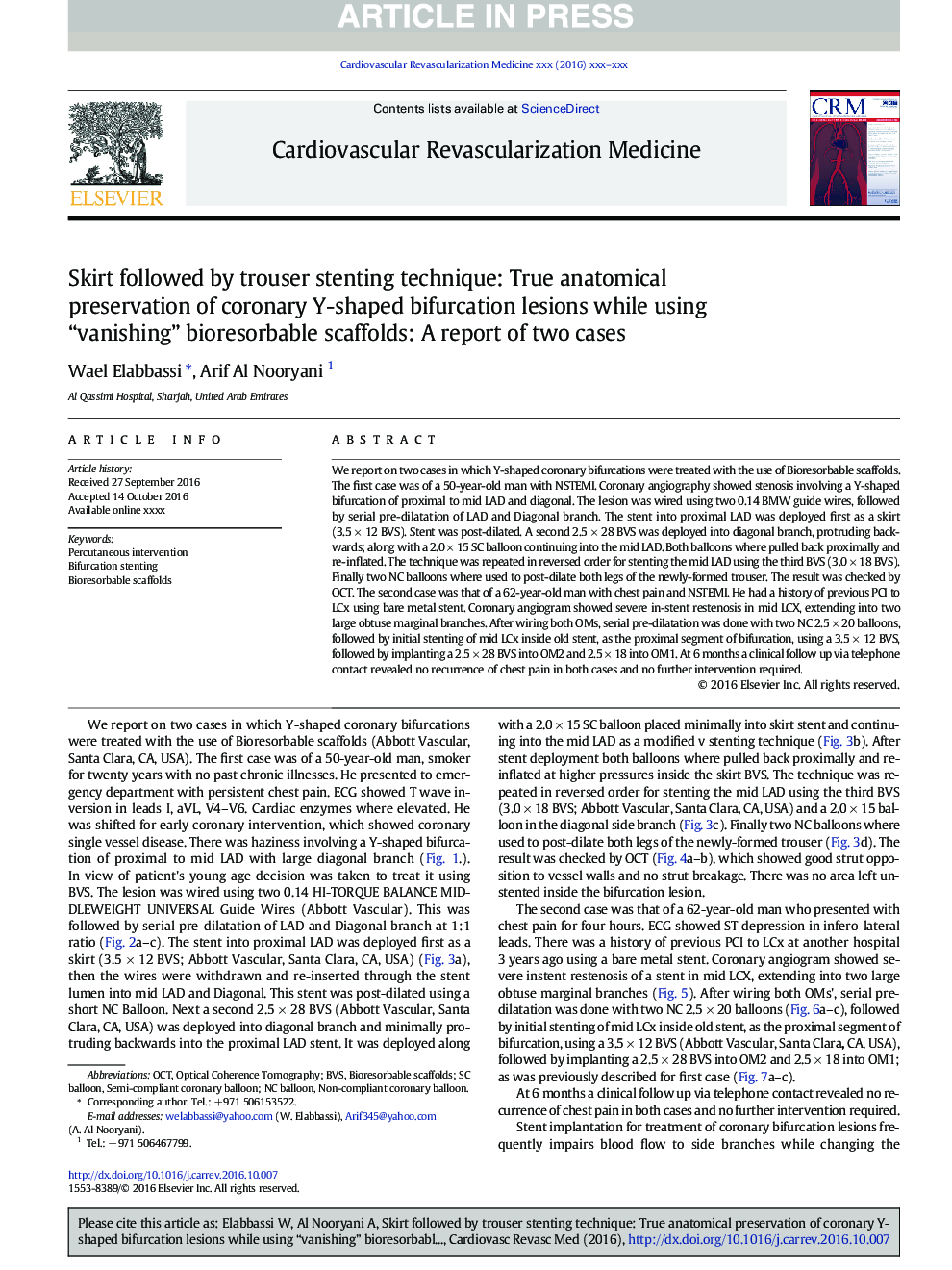| Article ID | Journal | Published Year | Pages | File Type |
|---|---|---|---|---|
| 5592800 | Cardiovascular Revascularization Medicine | 2017 | 6 Pages |
Abstract
We report on two cases in which Y-shaped coronary bifurcations were treated with the use of Bioresorbable scaffolds. The first case was of a 50-year-old man with NSTEMI. Coronary angiography showed stenosis involving a Y-shaped bifurcation of proximal to mid LAD and diagonal. The lesion was wired using two 0.14 BMW guide wires, followed by serial pre-dilatation of LAD and Diagonal branch. The stent into proximal LAD was deployed first as a skirt (3.5Â ÃÂ 12 BVS). Stent was post-dilated. A second 2.5Â ÃÂ 28 BVS was deployed into diagonal branch, protruding backwards; along with a 2.0Â ÃÂ 15 SC balloon continuing into the mid LAD. Both balloons where pulled back proximally and re-inflated. The technique was repeated in reversed order for stenting the mid LAD using the third BVS (3.0Â ÃÂ 18 BVS). Finally two NC balloons where used to post-dilate both legs of the newly-formed trouser. The result was checked by OCT. The second case was that of a 62-year-old man with chest pain and NSTEMI. He had a history of previous PCI to LCx using bare metal stent. Coronary angiogram showed severe in-stent restenosis in mid LCX, extending into two large obtuse marginal branches. After wiring both OMs, serial pre-dilatation was done with two NC 2.5Â ÃÂ 20 balloons, followed by initial stenting of mid LCx inside old stent, as the proximal segment of bifurcation, using a 3.5Â ÃÂ 12 BVS, followed by implanting a 2.5Â ÃÂ 28 BVS into OM2 and 2.5Â ÃÂ 18 into OM1. At 6Â months a clinical follow up via telephone contact revealed no recurrence of chest pain in both cases and no further intervention required.
Keywords
Related Topics
Life Sciences
Biochemistry, Genetics and Molecular Biology
Molecular Medicine
Authors
Wael Elabbassi, Arif Al Nooryani,
